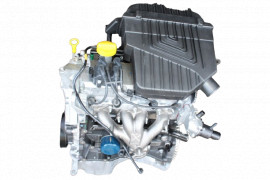Thorough Exam of the Mechanical Elements of a Hatchback's Motor
Understanding the elaborate functions of a hatchback's electric motor is comparable to unwinding a complicated challenge where every piece plays a critical duty in the overall efficiency of the lorry. As we dive right into the inner operations of these mechanical wonders, a much deeper admiration for the symphony of components that drive a hatchback ahead emerges.
Pistons and Cylinders

The efficiency and efficiency of a hatchback's engine rely heavily on the smooth operation of the cylinders and pistons. Normal upkeep and tracking of these components are essential to make sure optimum engine performance and longevity.
Camshafts and Crankshafts
Camshafts and crankshafts play important duties in the procedure of a hatchback's inner combustion engine, promoting precise timing and conversion of linear motion into rotational energy. The camshaft, located within the engine block, manages the opening and closing of the engine shutoffs at specific intervals. opel corsa engine.
On the other hand, the crankshaft, linked to the pistons via linking poles, transforms the direct movement of the pistons into rotational motion. This rotational power is then transferred to the transmission and eventually to the wheels, thrusting the lorry ahead. The specific control in between the camshaft and crankshaft is necessary for the engine to run effectively and create power properly. Any kind of imbalance or malfunction in these components can lead to engine performance issues and possible damage. For that reason, routine maintenance and timely substitutes are essential to make sure the smooth operation of these essential engine parts in a hatchback.
Valves and Timing Belts
Playing a crucial role in the synchronization and operation of a hatchback's internal burning engine, the valves and timing belts work in combination with the camshafts and crankshafts to make sure ideal performance. Proper timing is essential for the engine to work effectively and stop damage due to interference in between relocating components.

Fuel Injectors and Ignition System
Fuel injectors and ignition system are important parts in a hatchback's engine system, in charge of the click resources reliable shipment of gas and ignition of the air-fuel mix. Gas injectors play a vital function in the burning process by specifically spraying fuel right into the burning chamber at the best minute and in the appropriate quantity. This regulated delivery guarantees optimum fuel effectiveness and power outcome. Modern hatchbacks often use digital fuel injection systems that can change fuel delivery based on various aspects such as engine temperature level, lots, and rate.
Along with fuel injectors, stimulate plugs are vital for stiring up the air-fuel blend within the engine cylinders. When the stimulate plug produces a high-voltage electrical present, it develops a stimulate that ignites the compressed air-fuel blend, initiating the burning process. Effectively operating stimulate plugs are vital for engine performance, fuel efficiency, and discharges regulate. Routine evaluation and maintenance of both gas injectors and ignition system are vital to ensure the engine operates smoothly and successfully.
Air Conditioning System and Lubrication
Offered the critical duty of preserving optimum engine efficiency and efficiency in a hatchback, the cooling system and lubrication devices are indispensable components that ensure proper functioning and long life of the lorry. The lubrication system in a hatchback includes the oil pump, oil filter, and different lubes that decrease friction within the engine. Together, the air conditioning system and lubrication devices play an essential duty his response in maintaining the hatchback's engine running smoothly and effectively.
Conclusion

Pistons and cylinders are important components within the inner burning engine of a hatchback, responsible for transforming fuel right into mechanical energy. The camshaft, situated within the engine block, regulates the opening and closing of the engine shutoffs at certain intervals.Playing a vital role in the synchronization and procedure of a hatchback's interior combustion engine, the shutoffs and timing belts function in conjunction with the crankshafts and camshafts to make sure optimal efficiency.Gas injectors and stimulate plugs are crucial elements in a hatchback's engine system, accountable for the reliable delivery of gas and ignition of the air-fuel mixture. Modern hatchbacks commonly utilize electronic fuel injection systems that can readjust gas delivery based on different factors such as engine load, temperature, and rate.